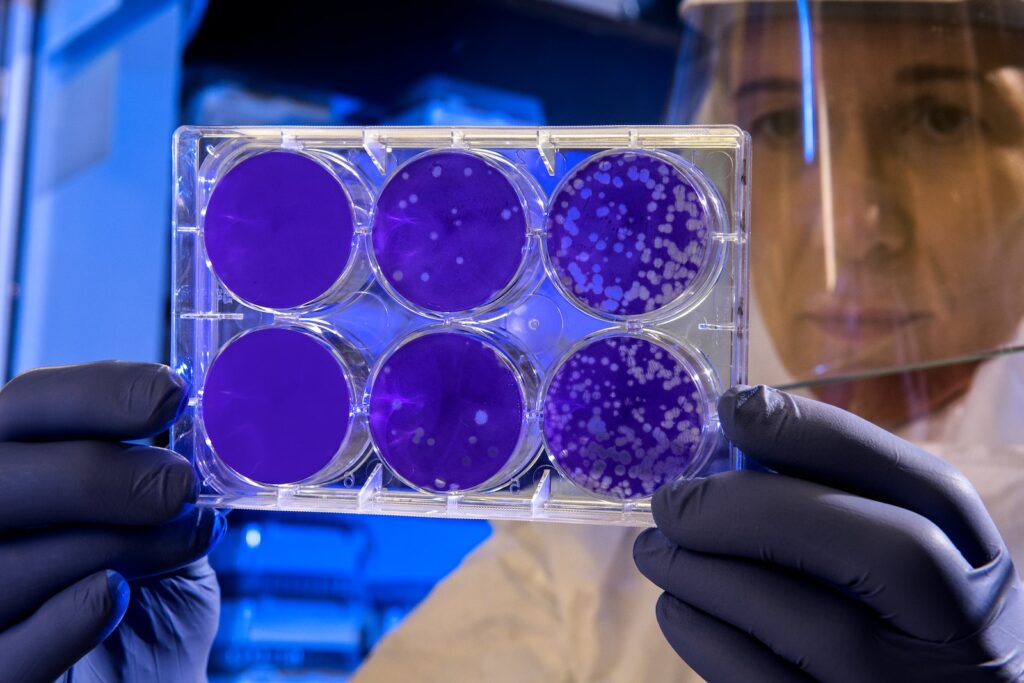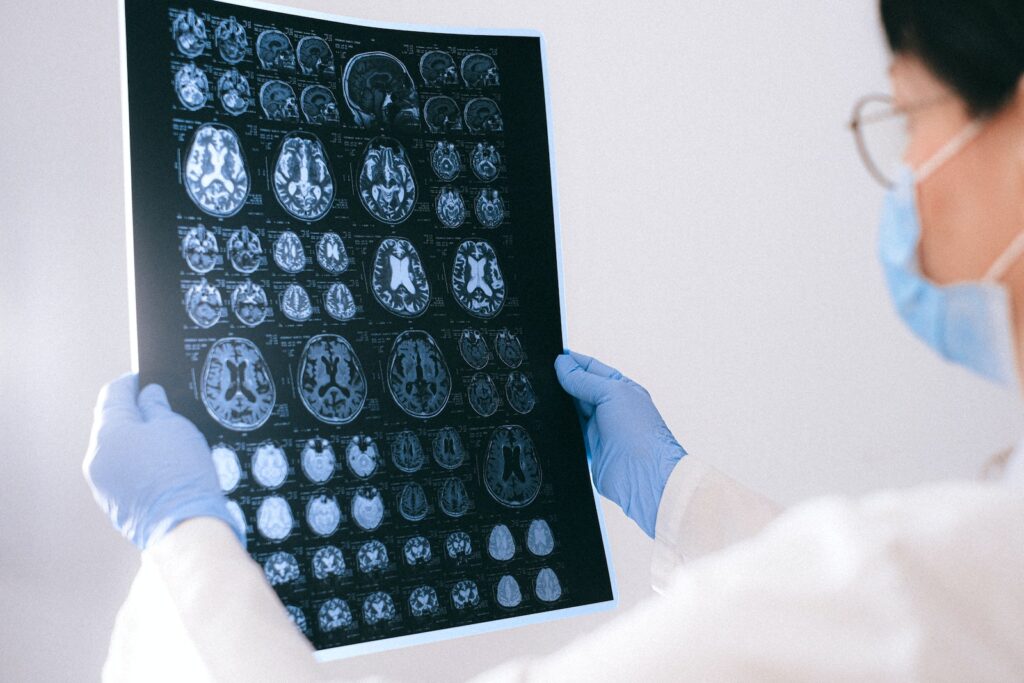Table of Contents
The Basics of Stem Cell Therapy: Understanding the Science Behind it
Stem cell therapy is an emerging branch of medicine that has shown great promise in treating and curing a wide range of diseases and conditions. At its core, stem cell therapy involves the use of specialized cells that have the ability to differentiate into specific types of cells in the body.
So, what are stem cells?
In simple terms, stem cells are undifferentiated cells with the potential to become any type of tissue or organ in the human body. They can be found in various parts of our bodies such as bone marrow, blood vessels, fat tissues etc.
Their unique properties make them ideal for use in regenerative medicine where they can repair or replace damaged or diseased tissues. Stem cell therapy involves harvesting these special cells from a patient’s own body or from donors and then introducing them into affected areas where they can grow into new tissues and organs.
How do stem cells work?
Stem cells have two defining characteristics – self-renewal and differentiation. Self-renewal means that they have the ability to divide multiple times without losing their original properties while differentiation refers to their ability to transform into specific types of matured somatic (body)cells such as skin, muscle, nerve etc.
This allows scientists and doctors to manipulate stem cells by directing their growth towards becoming desired tissue/organ types based on different factors like signals from surrounding molecules etc., which allow them to form complex cellular structures essential for normal functioning.
Applications and Potential Benefits of Stem Cell Therapy in Regenerative Medicine
Stem cell therapy has gained significant attention for its potential to help regenerate damaged tissues and treat several medical conditions. One of the promising benefits of stem cells is their ability to differentiate into numerous types of cells, including those responsible for creating new blood vessels, repairing injured nerves, and rebuilding muscles.
In regenerative medicine, stem cell therapy holds promise in treating a vast range of diseases such as Parkinson’s disease, Alzheimer’s disease, spinal cord injuries, diabetes mellitus type 1 & type 2 heart failure along with many other chronic incurable ailments. The anti-inflammatory properties present in Stem Cells also help speed up wound healing by promoting regeneration at the injury site.
One area where researchers are exploring it extensively is cardiac muscle regeneration. Heart failure affects millions worldwide due to limited options for treatment currently available – beyond medication or surgery; however recent scientific studies show that injecting mesenchymal stem cells (MSCs) directly into an affected area can improve functional capacity and reduce inflammation resulting in enormous improvements in quality of life on patients suffering from this dangerous condition.
Another promising application is cellular replacement therapy which uses induced pluripotent stem cells (iPSCs) derived from adult somatic cells reprogrammed back into a more embryonic-like state creating specific tissues (such as pancreatic beta-cells), organs or even body parts replacing both diseased/damaged tissue while replenishing them simultaneously with healthy ones. Given the shortage of organ donors globally this could save countless lives each year once it becomes fully realised.
The use of Stem Cell Therapy along with gene therapies have also shown remarkable results when it comes to treating genetic disorders like sickle-cell anaemia eliminating harmful genes present through gene editing approaches hence providing permanent cure.
This widely controversial topic has been subject to debates across multiple regions globally. However, with the benefits mentioned above and a plethora of studies to support them, it’s clear there is immense potential in this field for changing lives.
Types of Stem Cells Used in Therapeutic Treatments
Stem cells are unique in their ability to differentiate into different types of cells and tissues. There are various types of stem cells that have been identified by researchers for use in therapeutic treatments:
Embryonic Stem Cells
These are pluripotent stem cells, meaning they can give rise to any type of cell in the body. They are derived from embryos that were fertilized but not used for in vitro fertilization. The use of embryonic stem cells has been a topic of debate because it involves destruction of embryos.
Fetal Stem Cells
Fetal stem cells come from the tissue samples taken from aborted fetuses during the first trimester. These young and adaptable stem cells have shown great promise as a treatment option for certain diseases such as Parkinson’s disease and spinal cord injuries.
Adult Stem Cells
The adult human body also contains some form of undifferentiated or “multipotent” stem cell within its tissues, including bone marrow, adipose (fat), neural, skin and liver tissue. Unlike embryonic stem cells which can differentiate into almost every kind of cell found in human body; adult multipotent stems only produce specific lineages depending on their origin organ/tissue type.
Cord Blood Stem Cells
Cord blood is collected at birth when the baby is delivered via natural delivery or caesarean section with no harm done to either mother or infant. Cord blood represents a source rich with diverse populations which typically contain Hematopoietic Progenitor Cells(HPCs) along with Mesenchymal Stromal/Stem Cell(MSCs). HPC’s help rebuild declining blood components while MSCs work like scaffolds that facilitate healing damaged organs by recruiting bodies own mechanisms – a known as ‘paracrine’ effect.
Induced Pluripotent Stem Cells (iPSCs)
iPSC’s are engineered in laboratories by reprogramming somatic cells which can then be used to create new stem cells. In other words, iPSCs are adult cells that have been genetically altered back into an embryonic-like state and can differentiate into any type of cell in the human body. Scientists believe they may hold the potential to replace damaged or diseased tissue with healthy tissue without undergoing risk associated with allogenic transplantation like rejection or immune response
The specific type of stem cell chosen for therapy treatment is dependent on the condition being treated and overall health status of patient including their age, medical history, etc..
Challenges and Controversies Surrounding Stem Cell Research and Therapy
Despite the many potential benefits of stem cell therapy, it is not without its fair share of controversies and challenges. One of the biggest sources of debate revolves around the ethical considerations related to using embryonic stem cells in research.
Opponents argue that harvesting these cells from fertilized embryos destroys human life and should therefore be outlawed. Others point out that there are alternative sources of stem cells, such as those derived from adult tissues like bone marrow or fat, which do not pose similar ethical implications.
Another challenge facing researchers is how to ensure the safety and efficacy of stem cell therapies. Because these treatments involve transplanting living cells into a patient’s body, there is always a risk for adverse reactions or complications.
In addition, some unscrupulous clinics have been found to offer unproven or even dangerous “stem cell” treatments for various illnesses and conditions. This has led to calls for more regulation and oversight in the field.
Finally, there is still much we don’t know about how stem cells work and how they can best be used therapeutically. While researchers continue to make strides towards unlocking their full potential, there is still much work left to be done before we can fully realize all the promises of regenerative medicine.
Latest Developments and Advancements in Stem Cell Technology for Medical Use
Stem cell research has witnessed remarkable progress in the past few years, with numerous advancements and developments in technology. These breakthroughs have significantly impacted the field of regenerative medicine, leading to new treatment options for a variety of medical conditions.
One such development is the use of induced pluripotent stem cells (iPSCs), which are reprogrammed adult cells that can be transformed into any type of cell needed for therapeutic purposes. This innovation has opened up new avenues for personalized medicine where patients receive individualized treatments based on their own iPSCs.
In recent times, researchers have also explored the use of mesenchymal stem cells (MSCs), found in bone marrow and adipose tissue, for treating various conditions such as arthritis and liver disease. MSCs can differentiate into different types of tissues and are capable of suppressing inflammation and repairing damaged tissues.
The latest trend in stem cell therapy involves using exosomes – tiny vesicles released by many types of cells – to deliver therapeutic components directly to damaged or diseased areas. Scientists believe these exosomes could enhance current therapies by increasing their effectiveness while reducing potential side effects.
Another promising development is gene editing techniques like CRISPR/Cas9, which enable scientists to edit specific genes within stem cells so they can produce desired outcomes without introducing foreign genetic material into patient’s bodies.
Clinical Trials:
Some clinical trials involving stem cell therapy have shown positive results over the last few years. For example: – Researchers used a single infusion injection consisting entirely of human umbilical cord-derived MSCs to treat COVID-19 patients experiencing acute respiratory distress syndrome (ARDS) caused by SARS-CoV2 infection – A clinical trial involving 20 patients with vision loss due to age-related macular degeneration (AMD) showed that intravitreal injection of autologous bone marrow-derived stem cells improved visual acuity and reduced the size of lesions in 65% of participants – Clinical trials for treating Duchenne muscular dystrophy have shown encouraging results; a study of six boys treated with autologous bone marrow stem cell transplantation demonstrated increased muscle strength and improvements in motor function.
Overall, stem cell technology continues to evolve at an unprecedented pace. With new advancements emerging regularly, researchers are optimistic about finding more effective treatments for currently incurable diseases and injuries.
Future Prospects: The Promise of Stem Cell Therapy for Treating Incurable Diseases
Stem cell therapy holds great promise for treating diseases that have long been considered incurable. Scientists and researchers around the world are actively working on developing stem cell-based therapies to treat conditions such as Alzheimer’s, Parkinson’s disease, spinal cord injury, diabetes, heart disease, and many other debilitating diseases.
The ability of stem cells to transform into any type of specialized body cell makes them a prime candidate for regenerative medicine. This means that damaged tissues or organs can be replaced with new healthy ones grown from a patient’s own stem cells.
As research progresses and more successful clinical trials are conducted, it is believed that these therapies will become commonplace in hospitals. Patients suffering from previously untreatable diseases will have hope of complete recovery rather than merely managing symptoms.
In addition to treating current ailments, scientists are also exploring the use of stem cells in preventing future health issues. By using stem cells to regenerate healthy tissues before they fail completely or deteriorate over time due to aging processes or environmental factors like pollution or toxins exposure can significantly improve peoples quality of life as they age
The Bottom Line
The future looks bright for those seeking potential cures through Stem Cell Therapy. As technology continues improving at lightning speeds so too does our understanding about how the human body works; thus making it likely we’ll see remarkable results from this innovative medical breakthrough.




